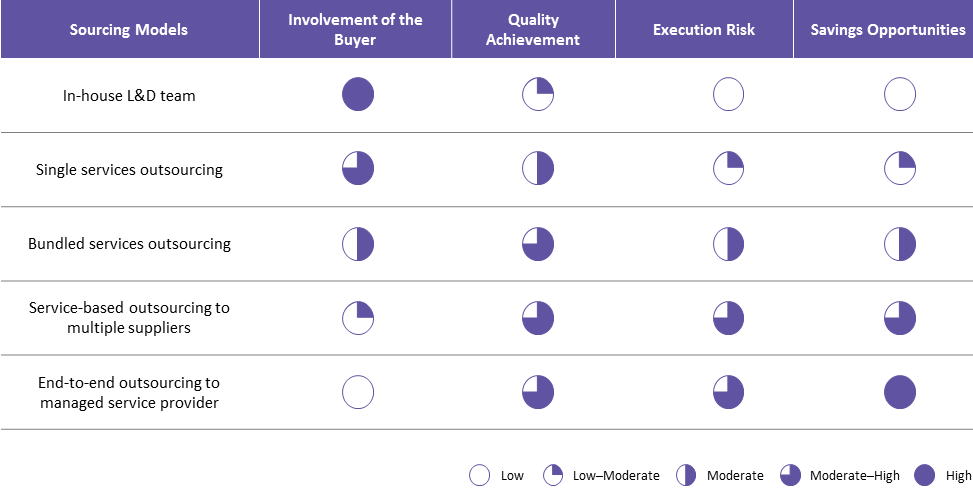
Category Scan: Learning and Development

Sourcing Models: Comparative Analysis
- The sourcing strategy differs largely with respect to the company’s structure and specific business goals
- A majority of the buyers face similar challenges when it comes to sourcing training services

|
Sourcing Models |
Challenges in Implementation |
Decision Enablers |
|
In-house L&D team |
L&D is a technology-driven segment and does not provide much cost savings by operating In-house. |
Currently not adopted by many international buyers. Cost involved in technology deployment and dedicated human resources to track the training programs would involve direct and indirect costs to the buyer. |
|
Single services outsourcing |
Duplication of costs (e.g., same training is commissioned several times by different parts of the organization). |
This model is preferred if there is any specific training requirement, like language training. Local engagements are observed in the emerging markets. |
|
Bundled services outsourcing |
Should adopt a service provider who is competent in all of the services procured from them. |
Widely preferred model by medium and large-sized buyers to achieve a balance between cost and quality. |
|
Service-based outsourcing to multiple suppliers |
There is a level of uncertainty in the quality and inconsistency of services delivered across different regions. |
Widely preferred model by medium and large-sized buyers to achieve cost savings by negotiating with multiple suppliers in different parts. |
|
End-to-end outsourcing to managed service provider |
Buyers’ risk is low. In-depth analysis and a training requirement briefing should be effective. |
Emerging sourcing model, where the involvement of buyers is less and cost saving opportunities are high with training quality consistencies. |
Sourcing Models: Pros and Cons
| Sourcing Model | Pros | Cons |
|
Single Sourcing |
|
|
|
Bundled Sourcing |
|
|
|
Regional Integrated Sourcing |
|
|
|
Global Integrated Sourcing |
|
|
Related Insights:
View All
Get more stories like this
Subscirbe for more news,updates and insights from Beroe








J